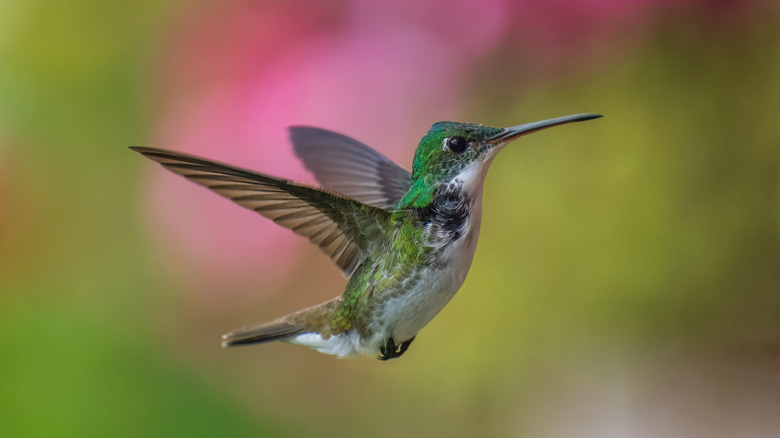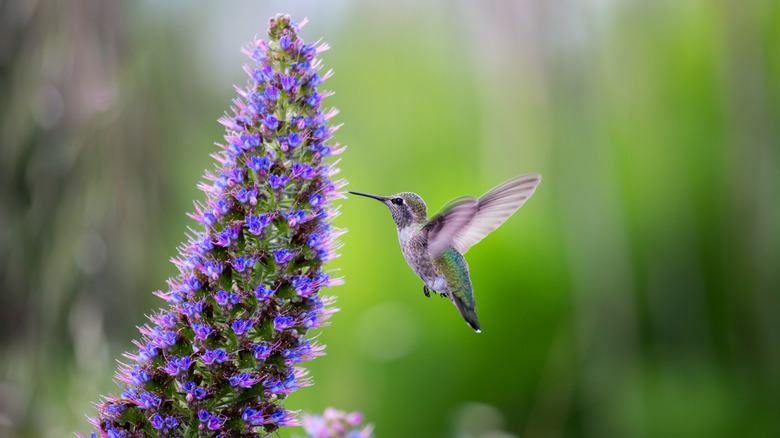Attract Hummingbirds To The Garden With A Purple Flower They Can't Resist
Some will go to any lengths to attract the busy, pint-sized hummingbird to their garden, including hanging sugar water feeders — or even refusing to toss overripe bananas and using them to attract hummingbirds, since they draw in the fruit flies that hummingbirds love to eat. But the best hack of all might be planting a must-have purple flower that could attract scores of them to your yard without you lifting a finger. Hummingbirds can't resist the anise hyssop (Agastache foeniculum), a purple herbaceous perennial that's a wonderful addition to your garden.
Anise hyssop offers an irresistibly sweet nectar, and the miniature tube-like blooms are ideal for a hummingbird's long, slim beak. It also doesn't hurt that the anise hyssop's flowers last a decent amount of time, all summer and throughout September, giving hummingbirds time to feed at their leisure. The purple plants also attract a number of bugs that the little birds can munch on for a high-protein snack.
Anise hyssop, part of the mint family, tends to grow in clumps and is one of many types of hyssop plants. And while it will attract butterflies as well as hummingbirds to your garden, deer will likely leave it alone. One thing to note is that it's a relatively short-lived perennial, so you may need to replace it every few years.
Ensure anise hyssop thrives with these easy steps
Planting anise hyssop should be a breeze. Keep in mind it's a resilient plant that can thrive in USDA Hardiness Zones 3 through 8, so that means it'll easily handle both mild and cold winters. Anise hyssop, which can grow between 2 or 4 feet tall, can be a great shrub to plant along fence lines or flower bed borders. It plays well with others, including goldenrod, (Solidago sp.), which also attracts hummingbirds.
When thinking about how to grow goldenrod, look for sunny spots, but know it'll tolerate low to neutral pH in the soil. Anise hyssop, on the other hand, prefers full sun, but also tolerates partial shade. It will thrive in several different varieties of soil, even sandy or loamy soil, just as long it doesn't sit in water. Make sure there's decent drainage, and you'll have a very happy plant.
As an added bonus, anise hyssop is drought resistant, so it grows well in dry climates. It'll thrive in pots, too. Just make sure the pot is 3 gallons or so in size and doesn't retain water. If you want to get the maximum number of flowers from your plant, just prune the plant back about halfway in late spring, and then you can sit back and watch the banquet of flowers grow for the hummingbirds come summer.

